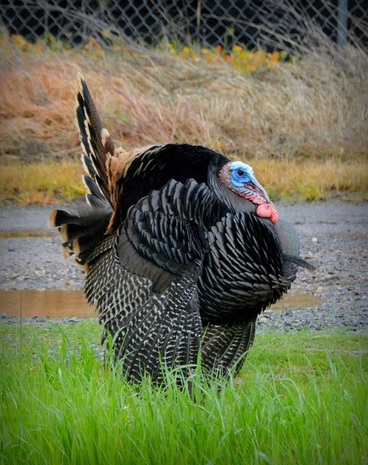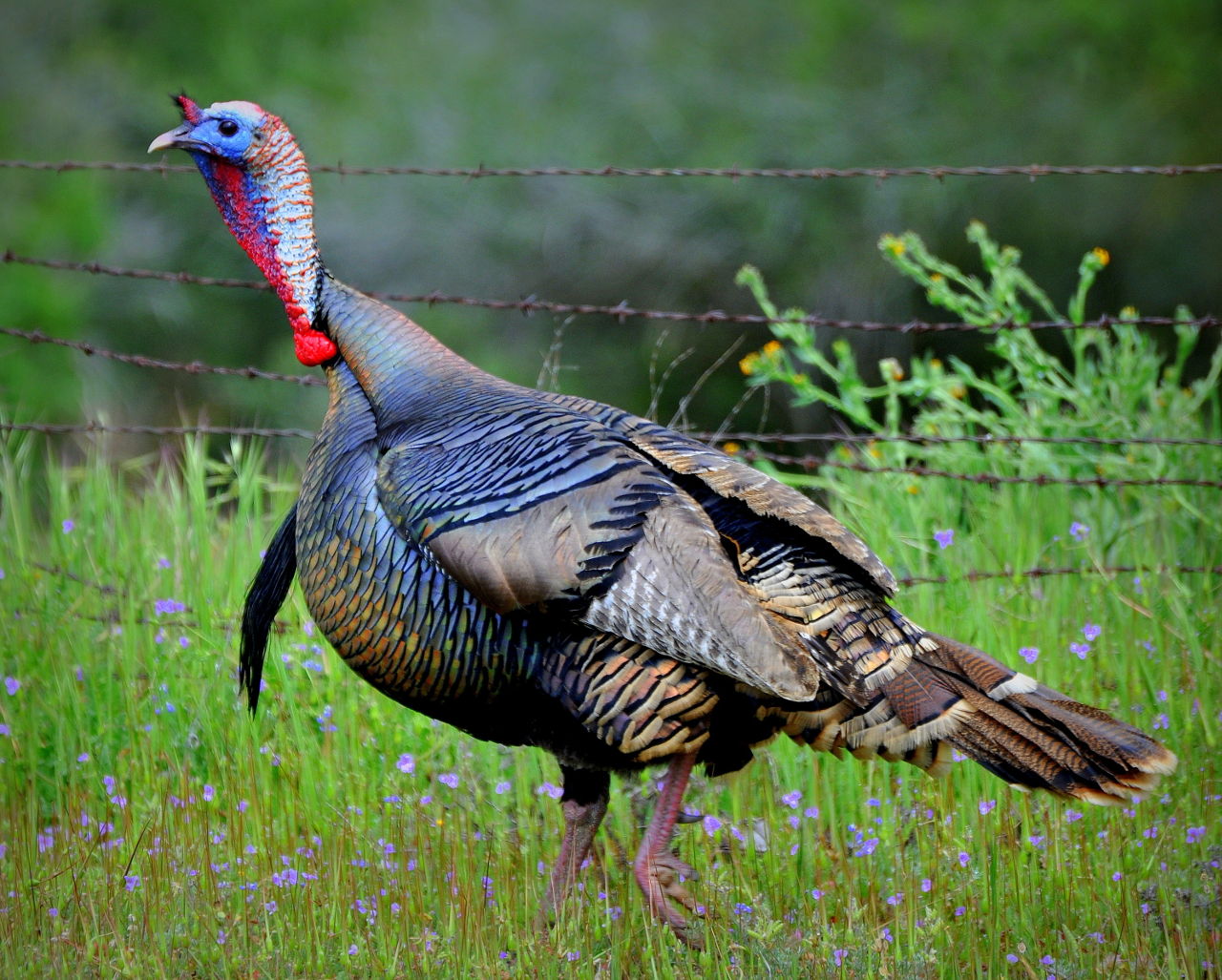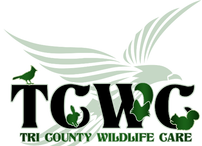December 2016 - the Wild Turkey

The wild turkey is native to North America and was a favored food of the Native Americans. The wild turkey and the Muscovy Duck are the only two domesticated birds native to the Americas.
These are big birds: length - 43-45 inches, wingspan - 49-56 inches, weight - 88-381 ounces. Their size doesn’t inhibit their movement. They can run at speeds up to 25 miles per hour and fly up to 55 miles per hour. Turkeys have long legs, wide rounded tails, and a small head on a long neck. They are mostly dark with a bronze-green iridescence to most of their 5,500 feathers. Their wings are dark and barred with white. Rump and 18 tail feather tips are rusty or white. The head and neck has bare skin that can be red, blue or gray and changes color with emotion or excitement. Turkeys can be found foraging on forest floors, grasslands and swamps and in our neighborhoods. They scratch the ground to find and consume nuts, seeds, fruits, insects and salamanders. By the early 20th century, turkeys no longer could be found over much of their traditional range due to hunting and disappearing woodland habitat. In the 1940’s, turkeys were relocated to their former habitats where woodlands were recovering. This was so successful that turkeys now live well beyond where the Europeans found them when they first arrived; they are found in every state except Alaska. There are an estimated 7 million wild turkeys in North America. Though turkeys gobble year round, it is in spring that the males’ mellow vibrato can be heard up to a mile away. In spring, a male turkey will display with the breast outthrust, head back, wingtips dragging on the ground, and tails feathers spread into a glorious fan all to lure the females into his harem. Ten or more hens may be in a single tom’s harem. When it is time to lay eggs, the females disperse to build hidden nests. Females will lay one egg per day for 4 to 17 days returning each morning for courtship and then return to their nests. Turkey chicks are precocial which means the young are relatively mature and able to move about soon after birth. Little turkeys can run soon after hatching and can even make short flights at just two weeks old. The hen has sole responsibility for the raising of the young who will stay with her through the following winter and then set out on their own. A male turkey is called a tom and a female is called a hen. The young birds are a “poult” and a group of turkeys is a rafter or a flock. A wild turkey’s average lifespan is about 3 to 5 years. The oldest known wild turkey lived to at least 13 years old. Wild turkeys can be a problem in our neighborhoods. The Humane Society of the United States offers several suggestions on how to deal with problem turkeys: don’t feed them, scare them away, encourage roosting turkeys to go elsewhere, protect your garden, and watch for them on the road. For more details on how to cope with problem turkeys, please visit this website - http://www.humanesociety.org/animals/turkeys/tips/what-to-do-about-wild-turkeys.html. |
Learn More!
|


